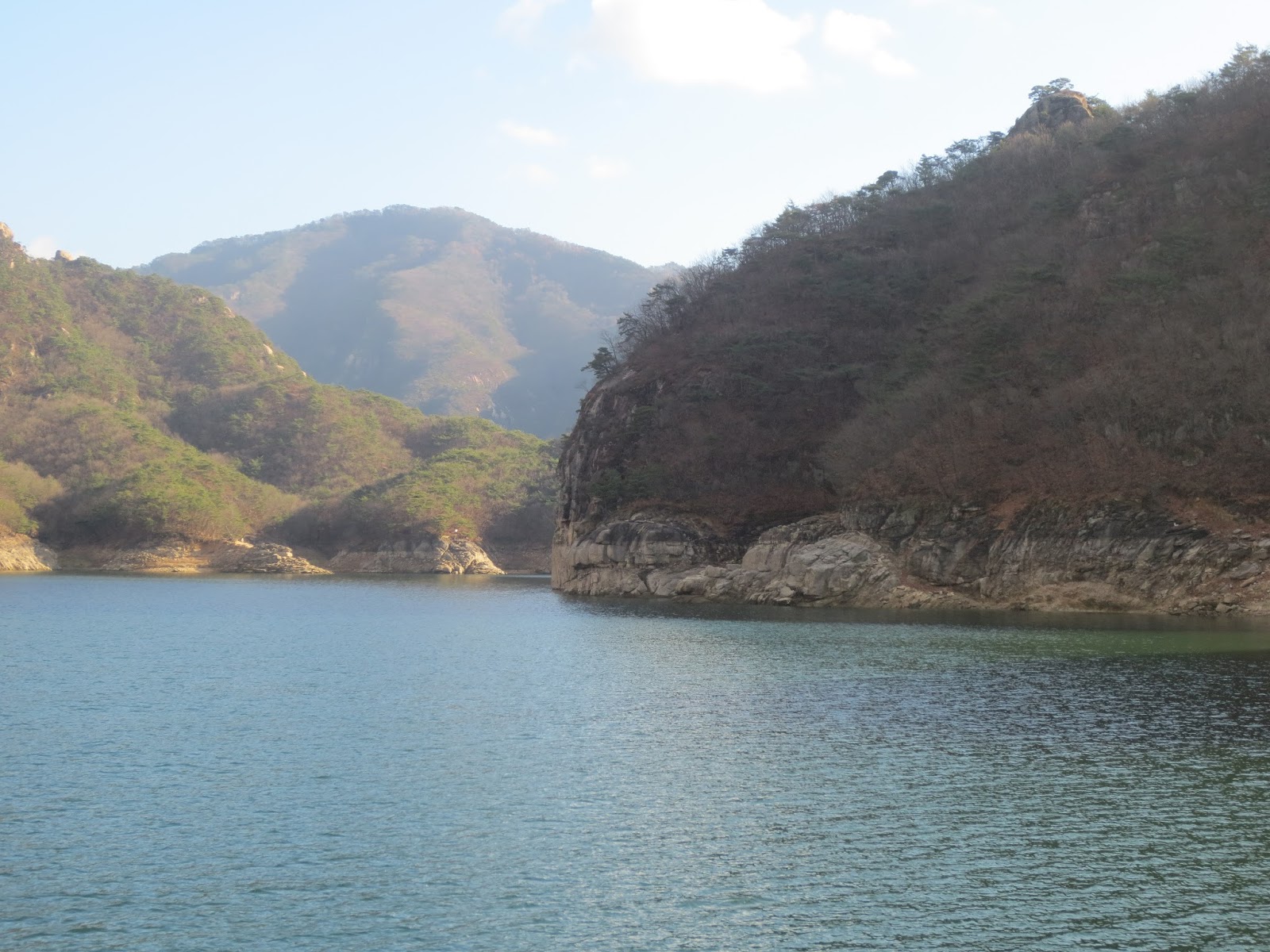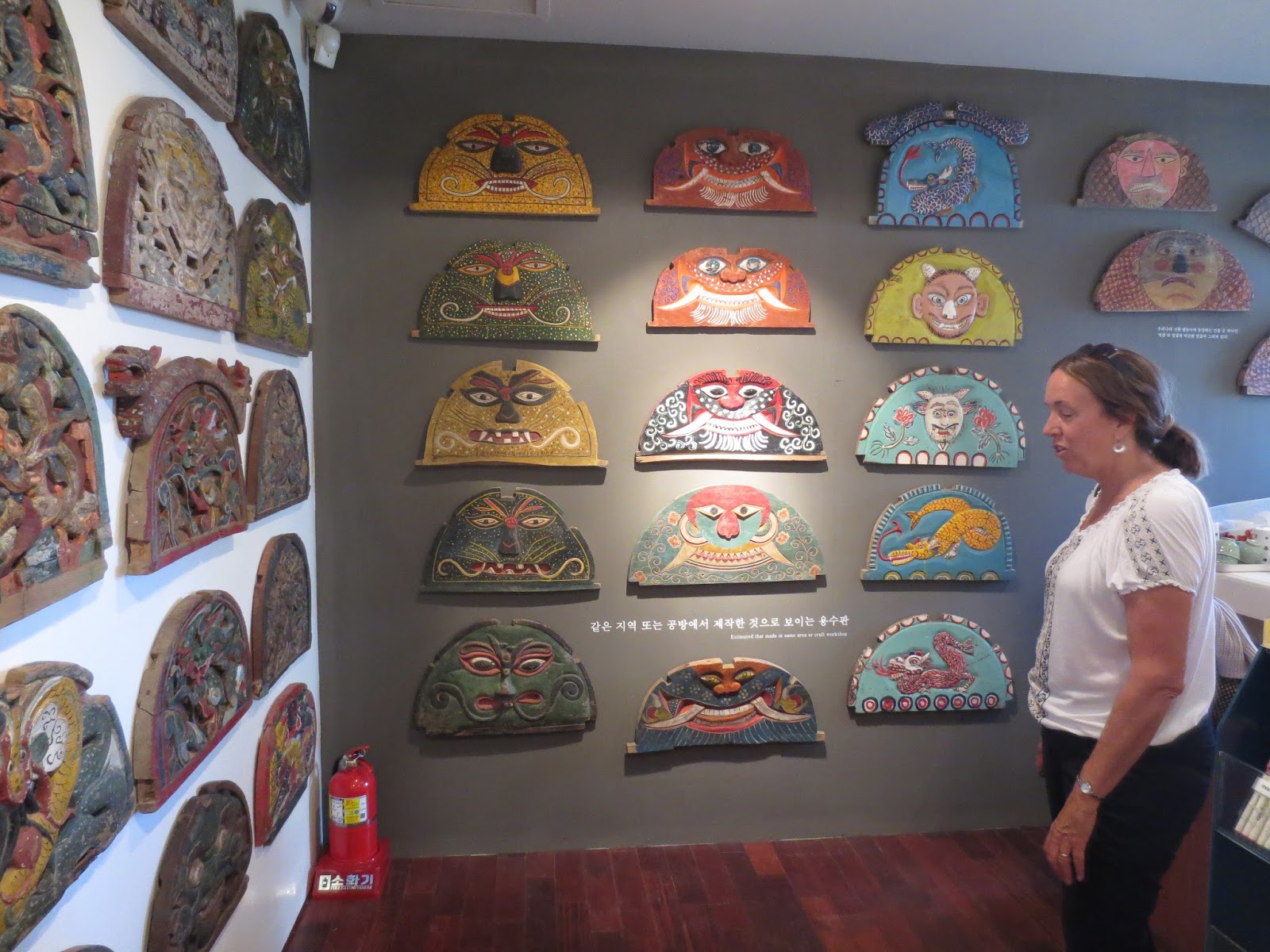Chungju Lake was formed when Chungju Dam was built on the Namhan River in Chungcheongbuk province. It is very near Danyang.
The view of the lake from the street above shows how lovely the day was.
Here is the gangplank and the ferry we were about to board to take a two hour tour of the lake.Bill said about 10,000 people were displaced when the dam was built.
It was a chilly day, but the refreshment bar on the ferry had snacks, beer and coffee.
It has been a couple of years, YEARS, since I've been on a boat of any type. I was happy to be on the water, even if it was 'just' a big lake. No swells to deal with, for sure!
Many of the bridges and overpasses in Korea are painted different colors. It is interesting, and I am not sure if it is for safety or just for fun.
We did not get much rain or snow in 2014, so the lake levels were a little lower than in years past.
A few Koreans braved the cold along with me to see the pretty views.
This is a stage or small amphitheater. There was also a bungee jumping platform near this, and we watched as a few brave souls jumped and sprung around in the cold. I cannot imagine what the windchill was on the way down from the platform. There was also a bungee swing-looking thing. Rather than being dropped by their ankles, the people were suspended by a pelvic sling of some type. It almost looked like a rubber band with the person in the middle. None of it looked all that fun in my opinion.
South Korea has some gorgeous mountains, and it is good to see the local folks enjoying it as well. We were the only Americans visiting, and I am told most foreign tourists don't go to some of these areas. I am glad I came to this part of the world. I did not know what I was missing!
South Korea has some gorgeous mountains, and it is good to see the local folks enjoying it as well. We were the only Americans visiting, and I am told most foreign tourists don't go to some of these areas. I am glad I came to this part of the world. I did not know what I was missing!









































